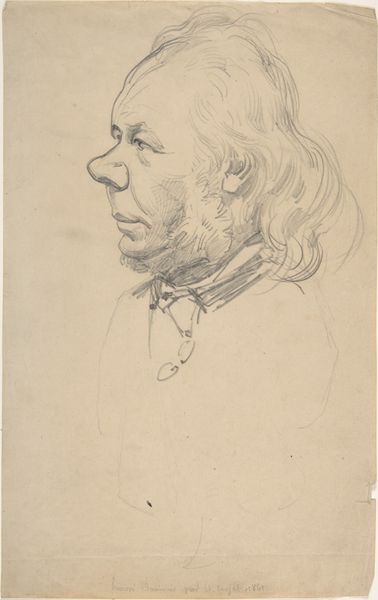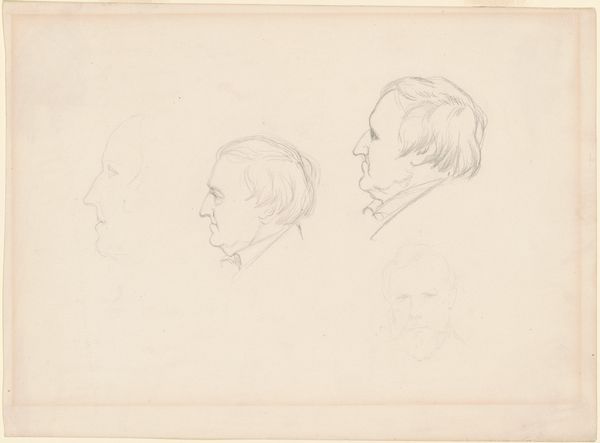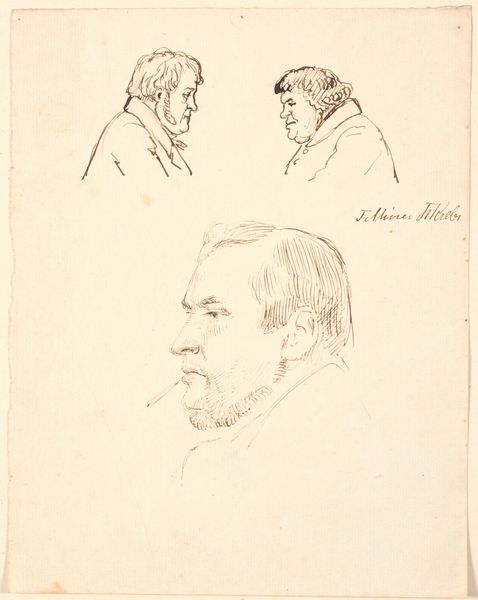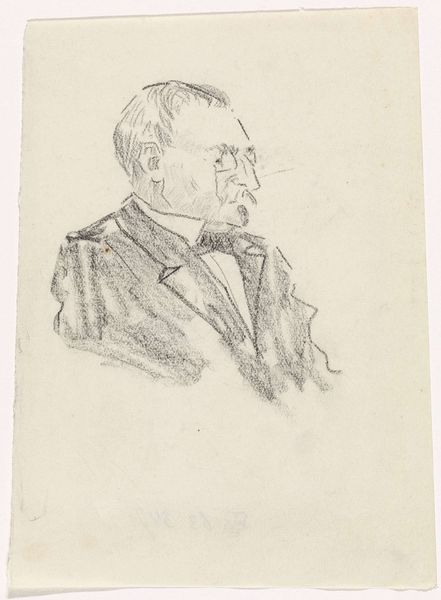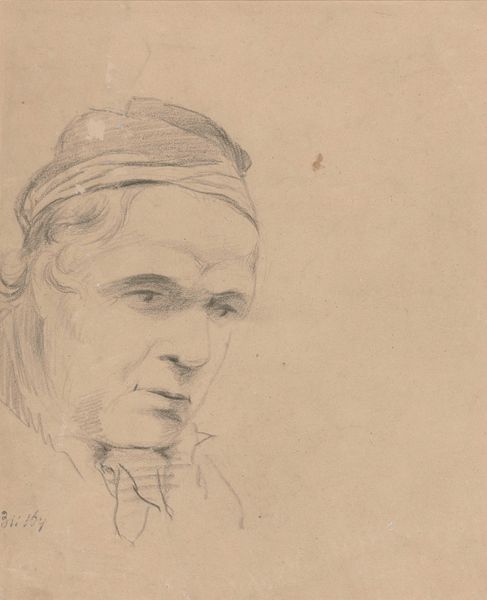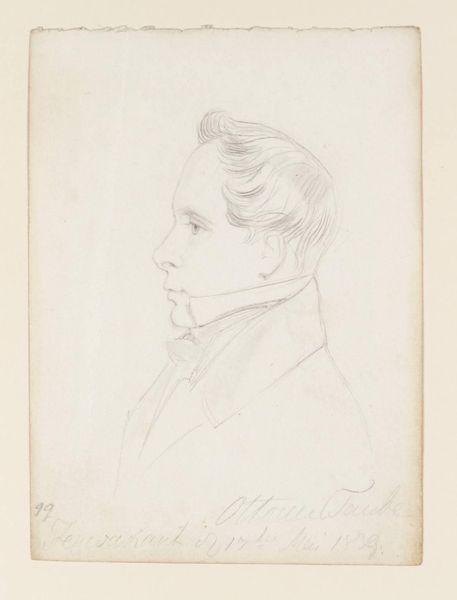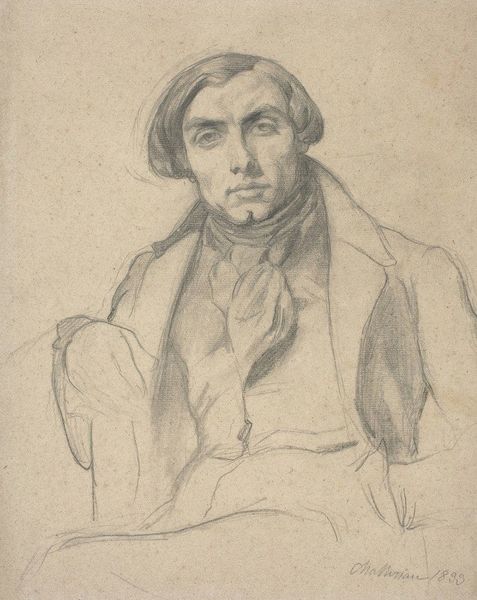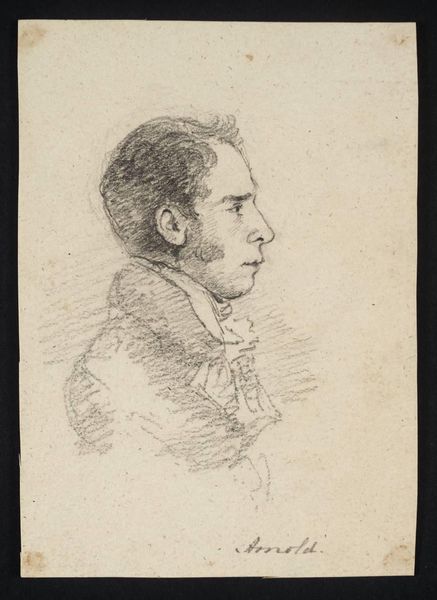
drawing, paper, pencil
#
portrait
#
drawing
#
pencil sketch
#
paper
#
pencil
#
portrait drawing
Dimensions: height 201 mm, width 318 mm
Copyright: Rijks Museum: Open Domain
Curator: So here we have "Three Profile Sketches of Jan Willem Pieneman," a drawing by Louis Royer, dating back to sometime between 1803 and 1868. The sketches are done in pencil on paper. Editor: It’s interesting how he used such simple materials to capture these different angles of Pieneman. What do you see in this work? Curator: It’s crucial to consider the pencil and paper itself. What kind of pencil? The quality of paper? Were these mass-produced materials, or specialized artist supplies? The very materiality speaks volumes about artistic practice and social status during this period. Editor: I hadn’t thought about it like that, more of a class statement on the materials than the image itself. So, if he was using readily available materials, what would that suggest? Curator: Potentially, it could point to the rise of drawing as a more accessible form of artistic expression. Not needing expensive oils or a formal studio opens it up. We should think of how drawings are also used to prepare the greater artworks on canvas that reflect better prestige, if you consider drawing like a “lower art” because of the simple material, is there a tension here? Also, where do you see these "profile sketches" located in today's digital media? Are "drawings" still of relevance to create main pieces, if the production is now heavily digitized? Editor: Hmm. That’s a lot to consider, but it’s definitely broadened my perspective on this simple sketch. So, I guess every artistic choice is tied into both the artistic expression and production? Curator: Exactly! Understanding the conditions of artistic production and materials informs how we understand the artwork. What seemed simple on the surface ends up revealing layers about artistic practice and even its societal relevance. Editor: This really makes me rethink the entire process. Thank you! Curator: Absolutely. Considering materials gives a tactile appreciation to how art intersects with its historical context.
Comments
No comments
Be the first to comment and join the conversation on the ultimate creative platform.


